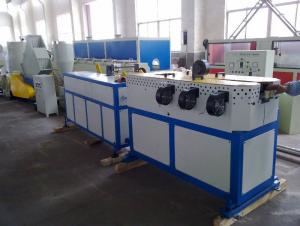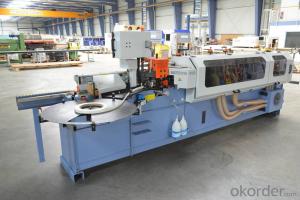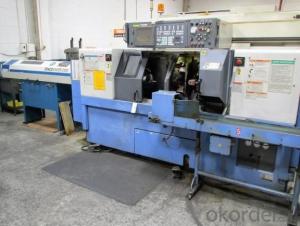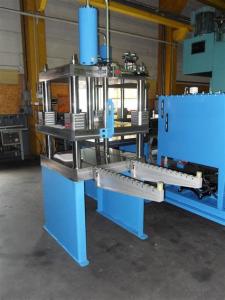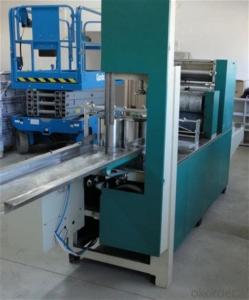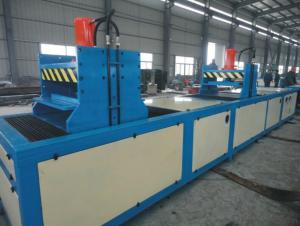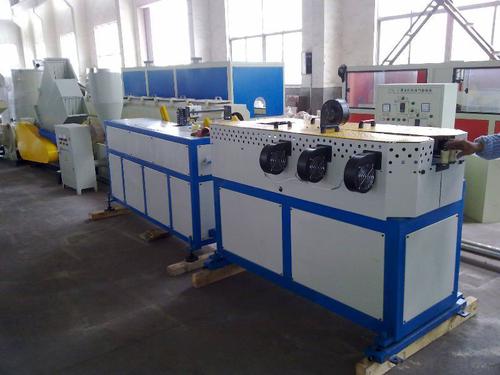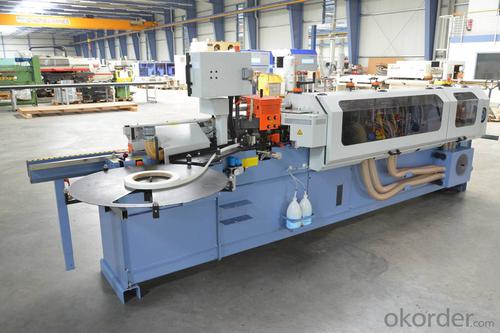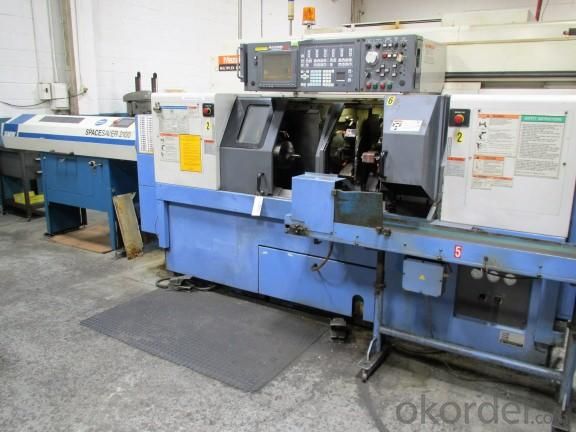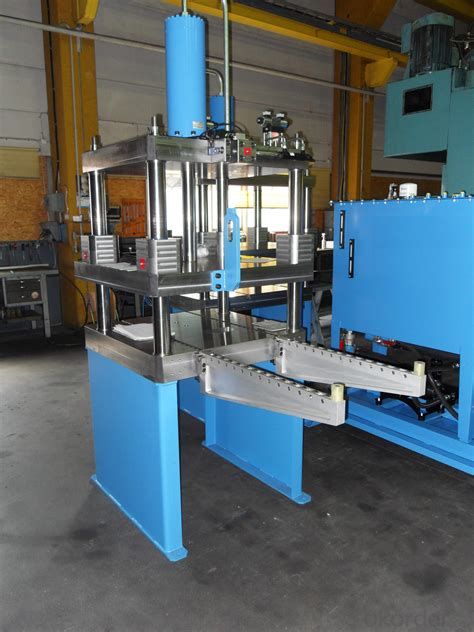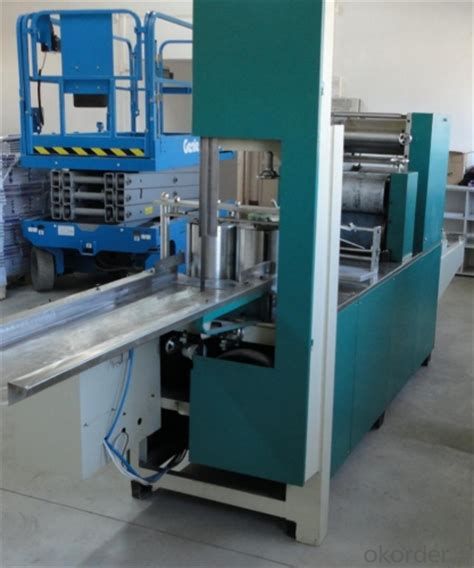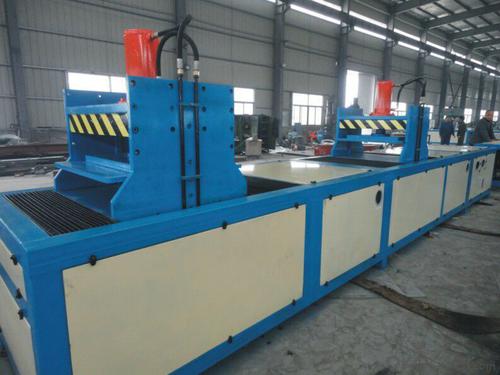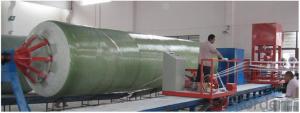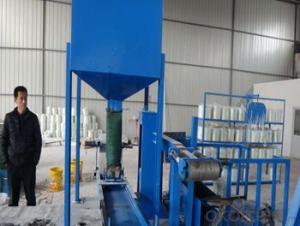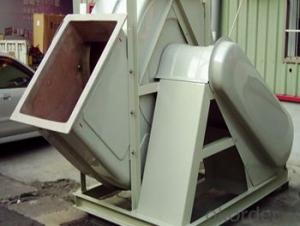FRP Pultrusion Profiles - FRP Pultruded Grating with Anti-Flammable and Best Quality at Good Price
- Loading Port:
- Tianjin
- Payment Terms:
- TT OR LC
- Min Order Qty:
- 4000 m.t.
- Supply Capability:
- 50000 m.t./month
OKorder Service Pledge
OKorder Financial Service
You Might Also Like
PRODUCT DESCRIPTION
Pultruded grating is made by a particular assembly process, which using “I” shape as its main load-bearing and special rod to go through the bearing bar. Pultruded grating include the standard grating and the custom grating, the custom grating can be designed to meet customer’s requirement or special using condition by changing the shape, size and space of the bearing bars, the surface can be covered with lozenge panel, grit panel, or added the anti-slippery sand directly.
FRP pultruded grating has the most characteristics of molded grating, but it has its distinct advantages, it has very high fiberglass content in the loading direction, so it has very high load capability, it has more superiority when used at wide span, so that the basic support will be decreased and the project cost will be reduced accordingly.
SPECIFICATION
Thickness (mm) | Bar width (mm) | Open space (mm) | Open rate (%) | Approx weight (kg/m |
25.4 | 15.2 | 22.8 | 60 | 13.2 |
25.4 | 15.2 | 15.2 | 50 | 15.9 |
25.4 | 15.2 | 10.1 | 40 | 18.5 |
25.4 | 40 | 10.8 | 21 | 14.5 |
38.1 | 15.2 | 22.8 | 60 | 15.8 |
38.1 | 15.2 | 15.2 | 50 | 19.1 |
38.1 | 15.2 | 10.1 | 40 | 22.4 |
50.8 | 25.4 | 25.4 | 50 | 16.6 |
50.8 | 25.4 | 12.7 | 33 | 21.1 |
CHOICE FOR PULTRUDED GRATING
Resin: GP resin, ISO resin, VE resin, Phenol resin
Color choice: Yellow, gray, green, custom color
Surface choice: Groove surface, grit surface, lozenge cover surface
FEATURES
a. Anti-corrosion and anti-rust
b. Light weight and high strength
c. Anti-flammable
d. Anti- fatigue
e. Safe and anti-slippery
f. Anti-ageing
g. Easy of maintenance
FIELDS SERVED
Sewage treatment,
water supply and drainage,
chemical industry,
oil industry,
power engineering,
pulp and paper,
construction engineering,
spinning, marine engineering.
APPLICATION
Operation terrace,
stair walkway,
ground floor,
trench cover,
sidewalk,
foot bridge,
equipment safety fence,
scaffold.
COMPANT DESCRIPTION
CNBM,China National Building Materials Group is a state-owned enterprise in charge of administrative affairs in china building materials industry. Established in 1984, CNBM is a large group corporation of building materials with total assets of 25 billion RMB and a total staff of 30,000.CNBM now owns 200 subordinating firms of solely owned and joint-venture companies.
CNBM International Corporation is one subsidiary of CNBM, we focus on offering good-quality products,professional service and complete solution to our customers. Strong delivery capacity, advanced technology& management, strong financing capability and excellent after-sale service are our advantages in sharing international market.
FAQ
1.Q:Are you factory or trading company ?
A:We are Factory produce FRP machines and FRP products.
2.Q:If can customized by customers requirements?
A:yes,we can produce the machine with customized size.
3.Q:How about the payment?
A:We accept any kind of payment.
4.Q:What is the guarantee?
A:Gurantee is one year.
5.Q:If you can training?
A:yes ,we can training in our factory also can send engineers to your factory training.
PICTURES
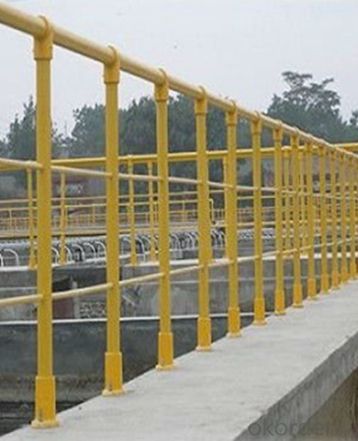
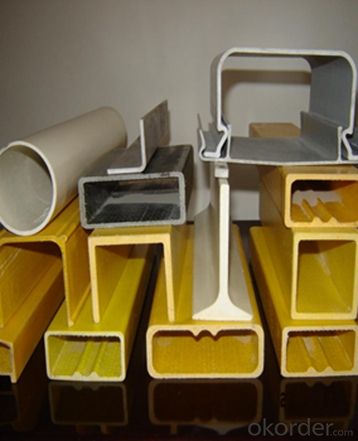
- Q: How do FRP pultrusion profiles perform in earthquake-prone areas?
- FRP (Fiber Reinforced Polymer) pultrusion profiles have several advantages when it comes to performance in earthquake-prone areas. Firstly, FRP pultrusion profiles are known for their high strength-to-weight ratio. This means that they are lightweight compared to traditional construction materials such as steel or concrete, while still offering significant strength. This characteristic plays a crucial role in earthquake-prone areas as it reduces the overall mass of the structure, minimizing the inertial forces that can be generated during seismic events. Therefore, FRP profiles can effectively withstand and absorb the energy released during an earthquake, reducing the risk of structural damage or collapse. Additionally, FRP pultrusion profiles have excellent durability and resistance to corrosion. Unlike steel, they are not susceptible to rust or other forms of degradation caused by moisture or chemicals commonly found in earthquake-prone areas. This resistance to corrosion ensures the long-term performance and reliability of FRP profiles, minimizing the need for costly maintenance and repairs. Moreover, FRP pultrusion profiles exhibit high flexibility and ductility. These characteristics allow them to deform and absorb energy without fracturing or breaking, which is particularly advantageous during seismic events. By dissipating the energy generated by the earthquake, FRP profiles help to protect the integrity of the structure and prevent catastrophic failures. Lastly, FRP pultrusion profiles are non-conductive materials, meaning they do not conduct electricity. This feature is important in earthquake-prone areas where electrical infrastructure can be vulnerable to damage. The non-conductive nature of FRP profiles reduces the risk of electrical faults or fires caused by seismic activity. In conclusion, FRP pultrusion profiles offer several performance advantages in earthquake-prone areas. Their lightweight, high strength, durability, flexibility, and non-conductive properties make them a reliable and effective choice for construction in regions prone to seismic activity.
- Q: Are FRP pultrusion profiles resistant to alkaline substances?
- Yes, FRP pultrusion profiles are generally resistant to alkaline substances. The composition and manufacturing process of FRP pultrusion profiles make them highly resistant to corrosion and damage caused by alkaline substances.
- Q: The manufacturing process of FRP products?
- 1, hand paste production method; 2, spray forming method; 3, fiber winding process; 4, molding process and molding process; 5, pultrusion method.
- Q: What are the typical dimensions and sizes of FRP pultrusion profiles?
- The typical dimensions and sizes of FRP (Fiber Reinforced Polymer) pultrusion profiles can vary depending on the specific application and manufacturer. However, there are some common ranges that can be considered. In terms of dimensions, FRP pultrusion profiles usually have a length that can range from a few feet to several tens of feet, depending on the requirements of the project. The width or height of the profiles can vary significantly based on the intended use, but common dimensions often fall within the range of 0.5 inches to 12 inches. The size of FRP pultrusion profiles is determined by their cross-sectional area, which is typically measured in square inches. The cross-section can have various shapes, including rectangular, square, round, or custom designs. The typical sizes of FRP pultrusion profiles can range from as small as 0.1 square inches to as large as 100 square inches or more. It is important to note that FRP pultrusion profiles can be custom-made to meet specific project requirements. Manufacturers have the flexibility to produce profiles with unique dimensions and sizes, ensuring they are tailored to the particular needs of the application. Therefore, it is always advisable to consult with the manufacturer or supplier to determine the most suitable dimensions and sizes for a specific FRP pultrusion profile.
- Q: Can FRP pultrusion profiles be used in the construction of wind turbine blades?
- Yes, FRP (Fiber Reinforced Plastic) pultrusion profiles can be used in the construction of wind turbine blades. These profiles offer high strength-to-weight ratio, excellent corrosion resistance, and can be custom-designed to meet the specific requirements of wind turbine blade construction. Additionally, FRP pultrusion profiles provide flexibility in design and can withstand the demanding conditions of wind turbine operation, making them a suitable choice for blade construction.
- Q: What are the maintenance requirements for FRP pultrusion profiles?
- FRP pultrusion profiles have low maintenance requirements due to their durability and resistance to corrosion. They are a low-maintenance choice for various applications. However, there are a few important maintenance practices that can help prolong their lifespan and ensure optimal performance. Firstly, it is important to periodically clean the profiles to remove dirt, dust, and debris. This can be achieved by using a mild detergent solution and a soft brush or cloth. It is advisable to avoid abrasive cleaners or materials that could scratch the surface. Regular visual inspections should also be conducted to identify any signs of damage or wear. Cracks, chips, delamination, or any other visible defects should be promptly addressed to prevent further damage. While FRP pultrusion profiles are generally resistant to UV radiation, prolonged exposure to direct sunlight can cause some degradation. Applying a UV protective coating or using a UV-resistant paint can minimize the effects of UV exposure and extend the profiles' lifespan. For pultrusion profiles with moving parts or connections, such as hinges or joints, it is important to apply a suitable lubricant to ensure smooth operation and prevent friction-related issues. It is crucial to use lubricants compatible with FRP materials to avoid any adverse chemical reactions. In the event of significant damage or wear, it may be necessary to repair or replace the affected sections of the FRP pultrusion profiles. Trained professionals with experience working with FRP materials should perform this task to ensure proper repair techniques and maintain structural integrity. In conclusion, while FRP pultrusion profiles require minimal maintenance, regular cleaning, inspection, and prompt addressing of issues are crucial for their longevity and optimal performance. By following these maintenance practices, the lifespan of FRP pultrusion profiles can be maximized while maintaining their structural integrity over time.
- Q: Can FRP pultrusion profiles be used in railway applications?
- Yes, FRP (Fiber Reinforced Polymer) pultrusion profiles can be used in railway applications. FRP pultrusion profiles are known for their high strength-to-weight ratio, corrosion resistance, and durability, making them ideal for various industries, including railways. In railway applications, FRP pultrusion profiles can be used for a wide range of components such as railway sleepers, bridges, platforms, cable management systems, and even structural support for railway tracks. These profiles offer excellent mechanical properties, including high stiffness and tensile strength, which are crucial for ensuring the safety and integrity of railway infrastructure. Furthermore, FRP pultrusion profiles have low thermal conductivity, making them resistant to extreme temperature variations. This is advantageous in railway applications where exposure to both hot and cold temperatures is common. Another significant advantage of using FRP pultrusion profiles in railway applications is their resistance to corrosion. Unlike traditional materials like steel, FRP does not rust or corrode in the presence of moisture or chemicals. This corrosion resistance minimizes the need for regular maintenance and extends the lifespan of railway components, reducing costs in the long run. Additionally, FRP pultrusion profiles can be easily customized to meet specific design requirements. They can be manufactured in various shapes, sizes, and colors, enabling engineers to create tailored solutions for different railway applications. Overall, the use of FRP pultrusion profiles in railway applications provides numerous benefits, including lightweight design, high strength, corrosion resistance, and customization options. These qualities make FRP an attractive alternative to traditional materials and contribute to the overall safety, efficiency, and longevity of railway infrastructure.
- Q: Can FRP pultrusion profiles be used in the construction of wastewater treatment tanks?
- Indeed, wastewater treatment tanks can effectively utilize FRP pultrusion profiles. These profiles are renowned for their exceptional strength-to-weight ratio, resistance to corrosion, and longevity, making them an optimal option for harsh environments such as wastewater treatment facilities. To manufacture FRP pultrusion profiles, continuous fibers like glass or carbon are drawn through a resin bath and subsequently through a heated die to attain the desired shape. This process yields profiles with consistent cross-sections and outstanding mechanical properties. In the construction of wastewater treatment tanks, FRP pultrusion profiles can serve various purposes. They can function as structural components, like beams, columns, and bracing systems, offering the necessary strength and rigidity to support the tank structure. Additionally, FRP profiles can reinforce concrete structures, bolstering their durability and resistance against chemical attack from the wastewater. Moreover, FRP pultrusion profiles can be engineered to endure the corrosive impact of the chemicals and gases found in wastewater treatment tanks. Unlike conventional materials such as steel or concrete, FRP exhibits a high resistance to corrosion, guaranteeing an extended service life and reduced maintenance expenses. Furthermore, FRP profiles provide advantages in terms of installation and transportation. They are lightweight, enabling easier handling and diminished labor requirements during construction. The modular nature of FRP profiles also facilitates swift assembly and disassembly, simplifying maintenance and modifications. Overall, incorporating FRP pultrusion profiles in the construction of wastewater treatment tanks offers numerous benefits, including superior strength, corrosion resistance, durability, and ease of installation. These advantages render FRP a dependable and cost-effective choice for wastewater treatment facilities.
- Q: Are FRP pultrusion profiles resistant to UV degradation?
- FRP pultrusion profiles typically possess strong resistance against UV degradation. These profiles, constructed from a blend of resin and glass fibers, are designed to endure extended sun exposure. The resin utilized in their production is customarily engineered to provide UV radiation resistance. This resistance effectively safeguards the FRP pultrusion profiles from the detrimental effects of prolonged sunlight exposure. Extensive testing has confirmed the exceptional UV resistance of FRP pultrusion profiles. Consequently, they are frequently employed in outdoor settings, such as construction, infrastructure, and marine industries, where they are subject to sunlight exposure. The UV resistance guarantees that these profiles maintain their structural integrity, color, and aesthetic appeal over an extended period. However, it is crucial to acknowledge that the level of UV resistance may differ based on the specific resin formulation used during manufacturing. Various manufacturers employ different resins containing varying levels of UV stabilizers. It is advisable to consult the manufacturer or supplier to ensure that the chosen FRP pultrusion profiles are specifically designed to withstand the UV conditions of the intended application. Regular maintenance and periodic inspection of the FRP pultrusion profiles are also vital to ensure their long-term UV resistance. This may involve cleaning, applying protective coatings, or utilizing UV-blocking additives if necessary. By taking these precautions, the UV resistance of FRP pultrusion profiles can be further enhanced, securing their durability and longevity in outdoor environments.
- Q: Can FRP pultrusion profiles be used in the construction of stadium seating?
- FRP pultrusion profiles offer a range of benefits that make them suitable for constructing stadium seating. Firstly, their lightweight yet strong composition is ideal for accommodating a large number of seats. This lightweight feature facilitates easier handling and installation, ultimately saving time and effort during construction. Secondly, FRP pultrusion profiles possess exceptional durability and corrosion resistance, making them well-suited for outdoor applications like stadium seating. Their ability to withstand rust, rot, and degradation from moisture, UV rays, and chemicals commonly found in stadiums ensures a long-lasting seating solution. Moreover, the non-conductive properties of FRP pultrusion profiles provide an added safety advantage, particularly in areas with electrical wiring. This reduces the risk of accidents or electric shocks associated with conductive materials. Additionally, the versatility of FRP pultrusion profiles allows for customization to meet specific design requirements, offering flexibility in stadium seating layouts. They can be manufactured in various shapes, sizes, and colors to align with both aesthetic and functional needs. Lastly, FRP pultrusion profiles boast a long service life with minimal maintenance requirements, resulting in a cost-effective choice for stadium seating in the long term. In conclusion, due to their lightweight, durable, non-conductive, customizable, and cost-effective nature, FRP pultrusion profiles are an excellent option for constructing stadium seating.
Send your message to us
FRP Pultrusion Profiles - FRP Pultruded Grating with Anti-Flammable and Best Quality at Good Price
- Loading Port:
- Tianjin
- Payment Terms:
- TT OR LC
- Min Order Qty:
- 4000 m.t.
- Supply Capability:
- 50000 m.t./month
OKorder Service Pledge
OKorder Financial Service
Similar products
Hot products
Hot Searches
Related keywords
